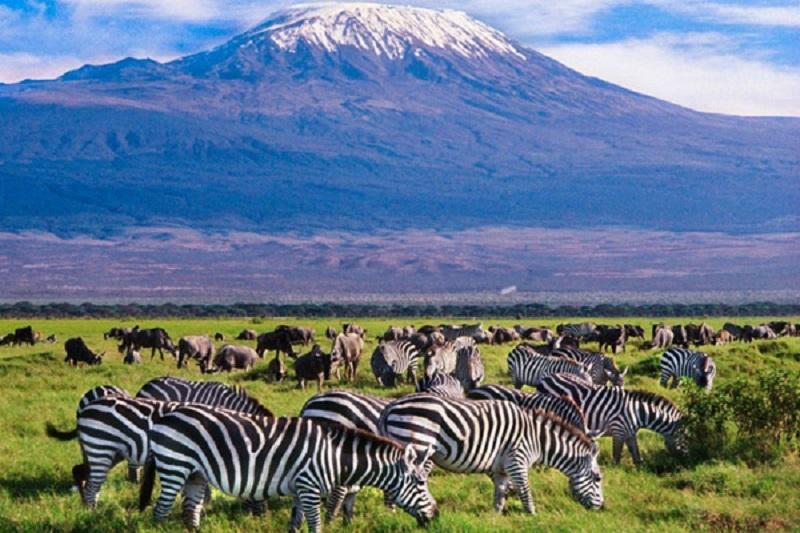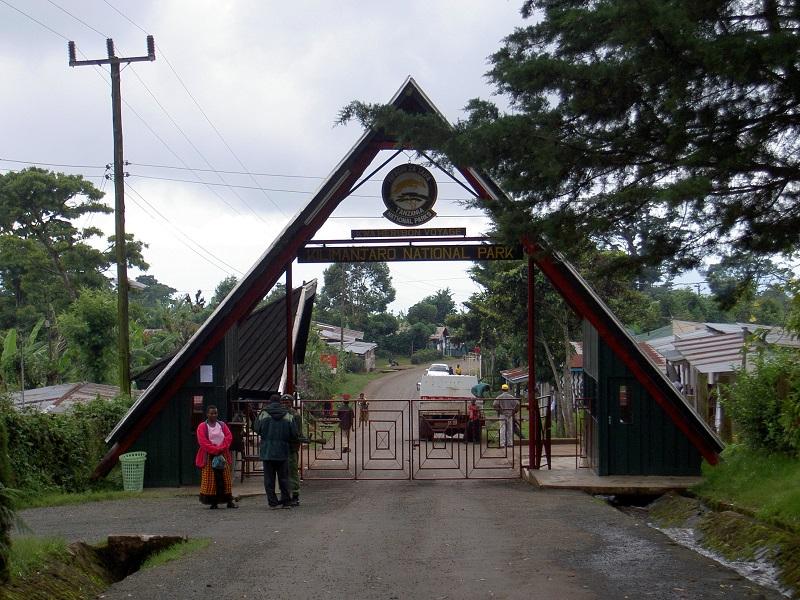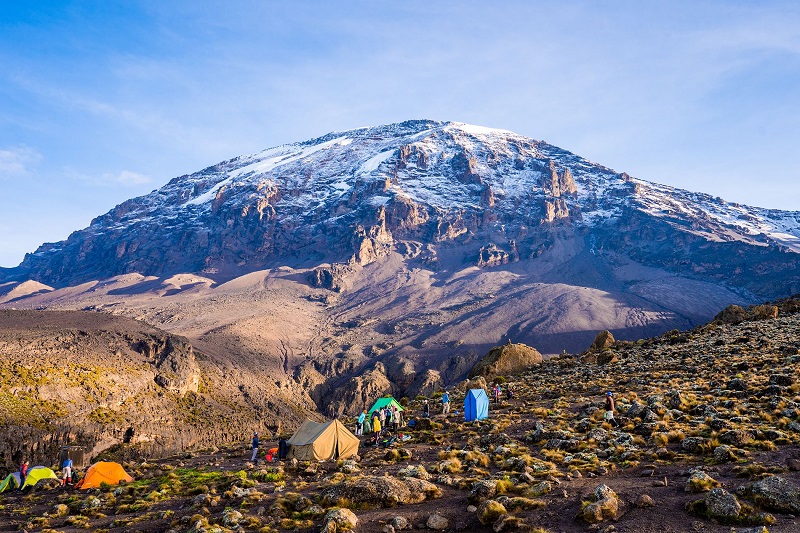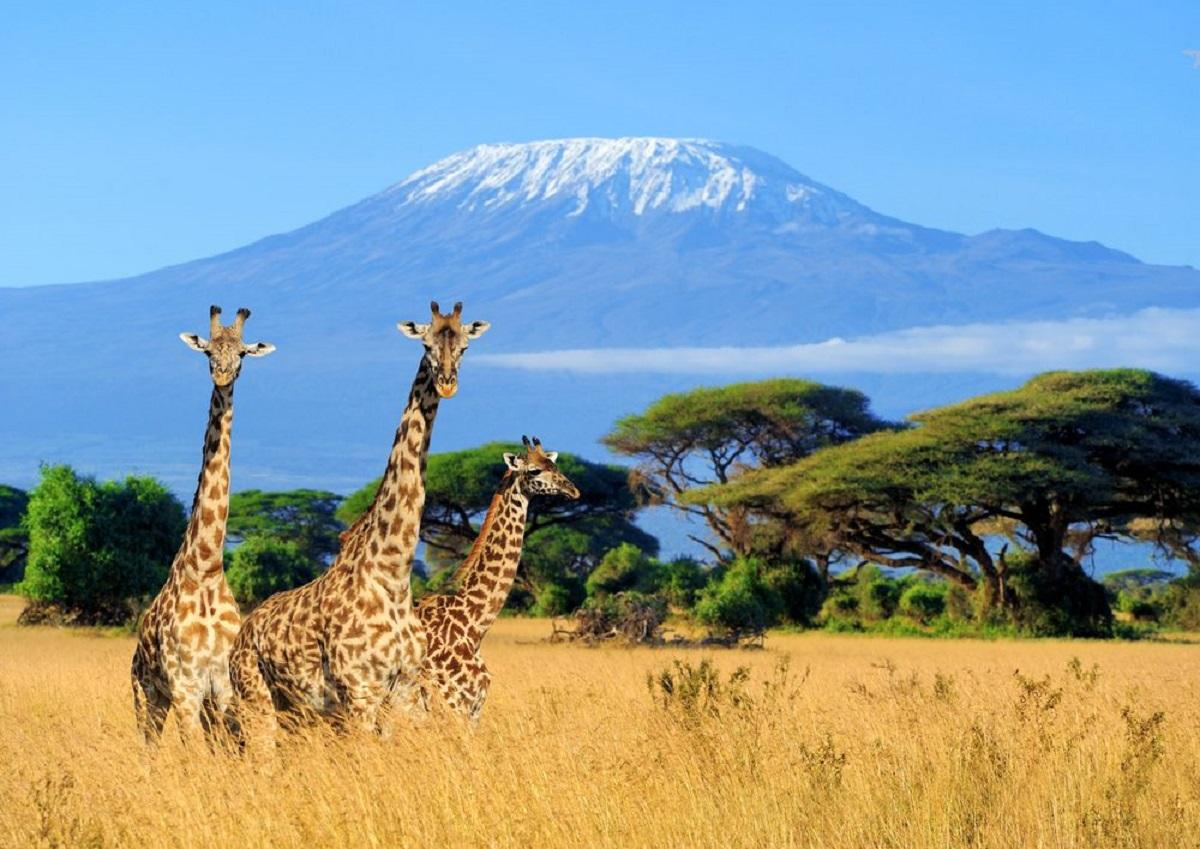Located in northeastern Tanzania, Kilimanjaro National Park is home to Africa’s highest peak, Mount Kilimanjaro. It stands at an impressive 5,895 meters (19,341 feet) above sea level. Established in 1973, the park spans over 1,688 square kilometers and features diverse ecosystems, from lush rainforests at its base to alpine deserts and glacial zones near the summit.
This majestic mountain attracts thousands of trekkers and climbers each year, making it one of Tanzania’s most popular destinations for adventure tourism. The park is not only known for its stunning scenery and challenging hikes but also for its rich biodiversity, which includes unique plant and animal species. As a UNESCO World Heritage Site, Kilimanjaro National Park plays a crucial role in conservation and is a symbol of Tanzania’s natural heritage.
Please Download Our Mobile App here
Overview of Kilimanjaro National Park
Kilimanjaro National Park encompasses various ecosystems, including tropical rainforests, heath, moorland, and alpine desert. The park is divided into several ecological zones, each with distinct flora and fauna. The lower slopes feature dense rainforests, home to diverse wildlife such as elephants, monkeys, and numerous bird species.
As climbers ascend, they encounter heath and moorland, characterized by giant lobelias and senecios. Above 4,000 meters, the landscape transitions to alpine desert, where hardy plants survive in harsh conditions.
The summit zone, featuring glaciers and permanent ice, showcases the effects of climate change, as these glaciers have been retreating over the years. The park’s diverse habitats are essential for conservation efforts and provide unique opportunities for visitors to experience Tanzania’s rich natural beauty.
Wildlife in Kilimanjaro National Park

Kilimanjaro National Park boasts a remarkable array of wildlife, showcasing the biodiversity of East Africa. The lower slopes are rich in fauna, including elephants, bushbucks, and various primates such as blue monkeys and colobus monkeys. Birdwatchers will find over 150 bird species, including the stunning turaco and several endemic species
As climbers ascend, they may encounter unique vegetation, including giant groundsels and lobelias, which contribute to the park’s distinctive ecosystem. Higher elevations are home to fewer species due to the harsh conditions, but animals like the elusive rock hyrax and various rodents can still be found.
Additionally, the park is crucial for conservation efforts, supporting research on endemic species and habitat preservation. You can participate in guided wildlife tours to learn more about the park’s ecosystems and the importance of conservation.
Best Time to Visit Kilimanjaro National Park
The best time to visit Kilimanjaro National Park for trekking is during the dry seasons, which typically occur from January to March and June to October. During these months, the weather is generally stable, with less rainfall and clearer skies, providing optimal conditions for climbers to reach the summit.
January and February offer mild temperatures, while June to October is ideal for those seeking a cooler climate. However, climbers should be prepared for fluctuating temperatures, particularly at higher elevations, where conditions can be extreme.
The rainy seasons, from April to May and November to December, present challenges such as slippery trails and increased risk of altitude sickness due to rapidly changing weather. While trekking during the rainy season can be less crowded, it’s essential to be aware of the potential difficulties and prepare accordingly.
Getting to Kilimanjaro National Park

Kilimanjaro National Park is easily accessible from Kilimanjaro International Airport, located about 40 kilometers from the park’s entrance. The airport offers both domestic and international flights, making it convenient for travelers. From the airport, visitors can take a taxi or arrange a shuttle service to reach the park gates.
The most commonly used entry points are Marangu, Machame, and Lemosho gates, each offering distinct trekking routes with varying difficulty levels. It’s advisable to book a guided trek through a reputable tour operator, as they provide valuable support and ensure safety during the climb. Additionally, some tour operators offer package deals that include transportation, meals, and equipment rentals, making the journey smoother for climbers.
Other Activities in Kilimanjaro National Park
Kilimanjaro National Park offers a variety of activities beyond trekking, allowing visitors to engage with the park’s unique environment. Trekking to the summit of Mount Kilimanjaro is the primary attraction, with several routes such as Marangu, Machame, and Lemosho, each offering different experiences and levels of difficulty.
Along the trails, trekkers can enjoy breathtaking views, encounter diverse flora and fauna, and experience the changing landscapes. The park is a great destination for birdwatching, with numerous species inhabiting the lower slopes. For those interested in cultural experiences, visitors can engage with local communities to learn about their traditions and ways of life.
Photography enthusiasts will find countless opportunities to capture stunning landscapes, wildlife, and vibrant sunsets. These activities, combined with the park’s natural beauty, make Kilimanjaro National Park a remarkable destination for adventure seekers.
Park Fees for Kilimanjaro National Park

Entry fees for Kilimanjaro National Park vary based on nationality and the type of trek. For non-residents, the park entrance fee is about $70 per adult per day, while children pay around $20. Additionally, climbers must pay camping fees, which can range from $30 to $70 per night, depending on the route and facilities.
The fees for guides and porters are separate and can significantly impact the overall cost of the trek. It’s essential to confirm the latest fee structures with tour operators or park authorities, as fees may change based on policy adjustments or seasonal variations. Overall, budgeting for the trip will ensure a well-planned and enjoyable experience.
FAQs
How long does it take to climb Mount Kilimanjaro?
The duration of the trek varies by route, typically taking between 5 to 10 days to reach the summit, depending on the chosen path and acclimatization plans.
Is it necessary to hire a guide for the trek?
Yes, hiring a certified guide is mandatory for climbing Mount Kilimanjaro, as they ensure safety, provide local expertise, and help with logistics.
What should I pack for the climb?
Essential items include layered clothing, a good-quality sleeping bag, trekking poles, a first aid kit, and sufficient food and water supplies. It’s advisable to check specific packing lists provided by your tour operator.
Conclusion
Kilimanjaro National Park is a stunning destination that offers adventure seekers an unparalleled experience. With its breathtaking landscapes, rich biodiversity and cultural significance, the park invites trekkers and nature lovers alike to explore its wonders.



